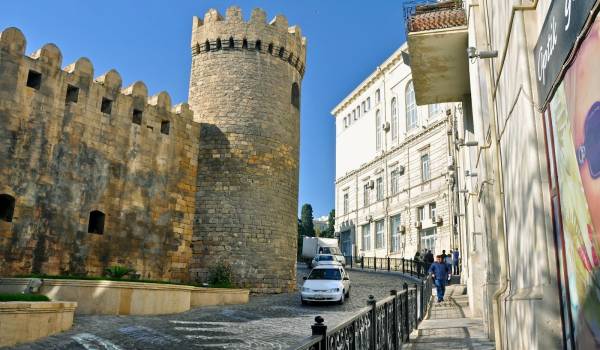
History of Baku
There is an opinion that the name "Zagatala" is a modified form of the word "Sakatala" (derived from the name of Sak Plain).
In the seventeenth century AD, Sak tribes migrated to Asia Minor and settled at the foot of the Caucasus Mountains. Zagatala was an integral part of ancient Caucasian Albania and was located in the west. There are many historical sites in Zagatala. Most of them are located in the city center. In the main square, the 700-year-old cypress tree provides shade till nowadays.
The city's most striking historical monument is the tower built in the 1830s against the occupation of Russian forces during the Caucasus wars. In the 1850s the city was the place of battles between Russians and Imam Shamil, the leader of Dagestan. Between 1860 and 1917, It was the center of the Zakatala district of Tiflis Governorship.
There are about 100 state-protected monuments here. The oldest of them are Perigala, Armatay Castle, Cingozkala, Devil Castle, Zagatala Castle, and others. District. There are Albanian churches of VI-VII centuries in the villages of Mamrux, Matsekh (Mazikh), Muhax, Gabizdere, Yukhara Tala, and Ukhara Chardakh.
Most of the historical monuments are located in the oldest villages that were left undamaged since ancient times. We can mention the 18th-century mosques in the village of Gozparag and Halal, the Chingizqala of XIV century in the Car village and District Historical Museum, the Albanian Tower in the Pashan, and Akhakhdara villages.
Zagatala Castle - was built in 1830 in Zagatala for protection purposes. Although the castle is built of an ordinary gray brick, it has a very attractive view from the outside. The tower was used for military purposes until 2005, and several very similar buildings from the 20th century remain here. The doors are never locked, so you can walk there anytime you want.
Old town- The Old City of Zagatala is centrally located in a beautiful garden with two trees (maple trees), 30 meters high, are planted in the 1780s. From the south, in the upper part of Heydar Aliyev Avenue, there are numerous old-style house facades. To find the entrance to the small tower, follow the path through the Orthodox church.
A ruined church in Zagatala-Located between the Old City Square and the castle, the ruins of a prominent church remain.
Parigala- Peri Fortress is an architectural monument of national importance. According to the historian Muhammad Gadzhiakhmedov, according to legend, the fortress was built during the Sassanids in the IV-V centuries. Unlike other fortresses located on the territory of Azerbaijan, the Peri fortress is different in that it is carved inside the mountain. Peri Fortress is located 300 meters from the village of Yukhary Chardakhlar on the steep part of the mountain, at an altitude of 150-200 meters from the ground.
In order to get to the fortress, there was a path carved from a rock 1-1.5 meters wide, the remains of which have survived to this day. The trail leading to the fortress is impassable and makes the fortress practically inaccessible.
Once in the fortress, there were steps that eventually collapsed. In the fortress, water channels were carried out using reed pipes. The name of the village (Chardakhlar) is also associated with the fortress. So, the word "Chartak" means "temple of fire on a rock."
Monument "Cingizqala" - In the village of Car, there are 10-12 meters high Cingizgala, built in the 16th century for protection. The village of Car is located in the north of Zagatala, on the southern slopes of the Greater Caucasus Mountains. A beautiful area is located in the mountains. There are restaurants in forest areas.